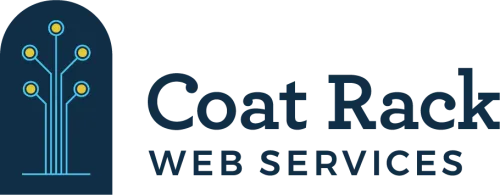Outdated software is a common problem for many nonprofits, slowing down operations, reducing efficiency, and creating unnecessary roadblocks. This reflects a broader trend, as the study reveals that 63% of Forbes Global 2000 chief executives view technology and digital innovation as one of the top trends impacting their company.
For nonprofits, this insight highlights a crucial opportunity. Investing in custom software and targeted tech improvements can streamline operations and help organizations better serve their communities.
Let's dive into how nonprofit organizations can benefit from this approach.
Does Custom App Development Help Nonprofits Improve Software Quality?
Absolutely. Custom app development focuses on tailoring solutions to meet the specific needs of an organization. Nonprofits often operate under budget constraints, making it hard to afford complete software overhauls. Custom software for nonprofits provides a middle ground—it works alongside existing tools to address pain points without requiring major system replacements, ultimately helping to improve software quality while maintaining cost efficiency.
Here's why custom software development makes a difference:
Focused solutions: Nonprofits can target specific program problems, such as outdated data entry processes or inefficient reporting, leading to enhanced performance and improved software quality.
Scalability: Custom apps grow with the organization's needs, ensuring long-term value.
Minimal disruption: Rather than replacing the entire system, nonprofits can gradually implement updates without interrupting daily activities.
Designed to meet specific functionality needs: Custom apps are tailored to enhance nonprofit processes like fundraising events, volunteer tracking, or impact measurement.
Coat Rack specializes in designing nonprofit apps and custom solutions to help organizations improve software quality and boost productivity without breaking their budgets.
How Incremental Updates Keep Software Reliable
Incremental updates are key to maintaining reliable software. Unlike complete overhauls, which require significant time and money, incremental updates improve software quality step by step.
Why do incremental updates work well for nonprofits?
1. Reduced risk: Updating small components of a program lowers the chances of major system failures.
2. Cost efficiency: Instead of a large upfront investment, nonprofits can allocate smaller budgets over time.
3. Continuous improvement: By addressing issues as they arise, nonprofits can avoid long-term problems that come with outdated systems.
Example of Incremental Updates:
Phase 1: Address slow performance by optimizing database queries.
Phase 2: Improve user-friendly interfaces to enhance staff productivity.
Phase 3: Implement security patches to protect sensitive data.
This approach ensures that nonprofits can consistently improve program reliability through incremental updates while managing their budgets efficiently.
The Role of Software Integration in System Efficiency
Nonprofits often rely on multiple program tools, from donor management systems to accounting programs. However, when these tools don't communicate effectively, it can lead to data silos, inefficiencies, and errors. This is where software integration becomes critical to the success of any nonprofit strategy.
What is Software Integration?
Software integration involves connecting different applications to work seamlessly as one unified system. This allows data to flow smoothly between departments, reducing manual effort and improving accuracy. As part of a nonprofit strategy, effective software integration ensures smoother operations and more efficient workflows.
Benefits of software integration for nonprofits:
Eliminates data silos: Ensures that all departments have access to consistent, up-to-date information.
Streamlines workflows: Automated processes reduce manual tasks, allowing staff to focus on mission-critical activities.
Improves reporting: Integrated systems make it easier to generate comprehensive reports, helping nonprofits measure their impact.
Real-World Example:
A nonprofit uses separate tools for managing donations and tracking volunteer hours. By integrating these tools, they can automatically link donor contributions to volunteer activities, improving overall project reporting and funding transparency. Effective software integration in this context reduces manual work and aligns with the broader nonprofit strategy to enhance overall performance.
5 Ways to Build a Strong Nonprofit Strategy for Tech Improvements
Building a strong nonprofit strategy for tech improvements is not just about adopting the latest tools, it's about creating a plan that ensures your technology evolves alongside your mission. With the right approach, a well-structured nonprofit strategy can improve efficiency, reduce costs, and enhance overall impact by making smart, targeted changes.
Here are five key ways to strengthen your nonprofit strategy for tech improvements.
1. Evaluate Current Software Performance
A strong nonprofit strategy starts with assessing how your existing software supports key operations. Identifying bottlenecks, outdated features, and manual processes that could be automated helps nonprofits align technology with their goals and ensure long-term success.
2. Prioritize Incremental Updates
Rather than overhauling systems all at once, nonprofits should focus on gradual improvements. Addressing high-impact issues first, such as system crashes or slow response times, ensures that updates remain manageable and aligned with the nonprofit strategy.
3. Utilize Custom Apps for Efficiency
Custom apps can help bridge gaps where existing systems fall short. For example, if a donor management system lacks mobile accessibility, a tailored app can provide a solution. Incorporating apps that improve data management and reporting strengthens a nonprofit strategy by enhancing efficiency and accessibility.
4. Integrate Software for Seamless Operations
A well-integrated system ensures that different tools work together smoothly, eliminating redundant tasks and improving staff productivity. Whether it's a charity app or an automated workflow, strategic software integration plays a crucial role in an effective nonprofit strategy.
5. Track Progress with Key Performance Indicators (KPIs)
Measuring success is essential to refining and improving any nonprofit strategy. Monitoring KPIs helps organizations identify what's working, make necessary adjustments, and demonstrate tangible results to stakeholders.
By focusing on these five areas, nonprofit leaders can develop a robust nonprofit strategy that not only enhances software performance but also supports long-term organizational growth.
Small Changes, Big Impact for Nonprofits
We understand how outdated programs can slow down mission-driven work. Nonprofits don't need a complete tech overhaul to see improvements. With custom programs, incremental updates, and strategic integration, organizations can optimize operations, save time, and focus on raising awareness for their causes.
Coat Rack provides nonprofits with cost-effective software development services. From building apps to streamline donation processing to creating apps that connect volunteers, we offer scalable solutions designed for nonprofit needs. With deep expertise in the nonprofit industry, we develop user-friendly apps that drive community impact. Contact us today to elevate your nonprofit's mission and digital strategy.

